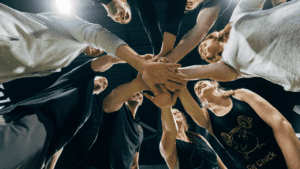As we age, staying physically active becomes even more important for maintaining good health, managing weight, and preventing chronic diseases. Engaging in regular exercise can enhance physical function, improve mental well-being, and contribute to an overall high quality of life. In this article, we will outline physical activity guidelines specifically tailored for adults over 45 years of age, ensuring that they can stay active, healthy, and enjoy the benefits of an active lifestyle.
Regular physical activity is essential for maintaining good health and overall well-being. Whether you’re a fitness enthusiast or someone looking to incorporate exercise into your daily routine, following exercise guidelines can help you stay on track and reap the numerous benefits of an active lifestyle. In this article, we will outline some practical exercise guidelines for adults who want to stay physically active and improve their overall fitness.
Physical Activity Guidelines
1. Consult with a Healthcare Professional
Before starting any exercise program, it is crucial to consult with a healthcare professional, especially if you have any pre-existing medical conditions or concerns. They can assess your fitness level, consider any limitations, and provide personalized recommendations to ensure safe and effective physical activity.
2. Choose Activities You Enjoy
To maintain long-term consistency with exercise, choose activities that you genuinely enjoy. It could be swimming, cycling, running, dancing, hiking, or any other physical activity that gets you moving and brings you joy. By engaging in activities you find pleasurable, you’re more likely to stick to your exercise routine.
3. Set Realistic Goals
Setting realistic goals is essential to stay motivated and track your progress. Whether it’s increasing your endurance, improving flexibility, or building strength, establish achievable goals that are specific, measurable, attainable, relevant, and time-bound (SMART goals). Break them down into smaller milestones and celebrate each accomplishment along the way.
4. Start Slow and Gradually Increase Intensity
If you’re new to exercise or returning after a long break, it’s crucial to start slowly and gradually increase the intensity and duration of your workouts. Begin with low-impact exercises to build a foundation, then progress to moderate or high-intensity activities as your fitness level improves. This approach reduces the risk of injury and allows your body to adapt more effectively.
5. Aim for a Balanced Workout Routine
A well-rounded exercise routine should include a mix of cardiovascular exercises, strength training, and flexibility exercises. Cardiovascular activities such as brisk walking, jogging, or cycling enhance heart health and boost endurance. Strength training exercises like weightlifting or bodyweight exercises promote muscle strength and bone health. Don’t forget to incorporate flexibility exercises like yoga or stretching to improve joint mobility and prevent injuries.
6. Prioritize Consistency and Frequency
Consistency is key when it comes to exercise. Aim for at least 150 minutes of moderate-intensity aerobic activity or 75 minutes of vigorous-intensity aerobic activity per week, spread across several days. Additionally, include strength training exercises at least twice a week, targeting major muscle groups. Remember, even shorter bouts of physical activity can provide benefits, so find ways to stay active throughout the day.
7. Stay Hydrated and Maintain a Balanced Diet
Proper hydration is essential for people of all ages. Drink plenty of water before, during, and after exercise to stay adequately hydrated. Additionally, maintain a balanced diet that includes a variety of nutrient-rich foods, focusing on lean proteins, whole grains, fruits, vegetables, and healthy fats. A well-nourished body will have the energy and nutrients it needs to support physical activity. Check out The Importance of Protein For Older Adults for more information of the need for more protein as you age.
8. Incorporate Strength Training
The CDC recommends for all adults to have at least two days a week to strengthen muscles, even the 65+ age group. Strength training exercises are essential for maintaining muscle mass, improving bone density, and promoting overall strength and mobility. Engage in strength training activities at least two days a week, targeting major muscle groups such as the legs, arms, chest, back, and core. You can use free weights, weight machines, resistance bands, or even bodyweight exercises like squats, lunges, push-ups, and planks.
9. Include Cardiovascular Exercise
Cardiovascular exercise, also known as aerobic exercise, is vital for maintaining heart health, improving endurance, and managing weight. The CDC recommendations suggest to aim for at least 150 minutes of moderate-intensity aerobic activity or 75 minutes of vigorous-intensity aerobic activity each week. Examples of suitable activities include brisk walking, cycling, swimming, dancing, or using cardio machines such as ellipticals or stationary bikes.
10. Prioritize Flexibility and Balance Exercises
Flexibility and balance exercises are crucial for older adults to maintain joint mobility, prevent falls, and improve overall stability. The CDC starts recommending balance for anyone over 65. Exercises can Include activities like yoga, Pilates, tai chi, or stretching routines in your weekly regimen. These exercises promote flexibility, enhance posture, and help maintain a strong sense of balance.
11. Emphasize Low-Impact Activities
As we age, it’s important to be mindful of joint health and minimize the risk of injuries. Incorporate low-impact activities into your routine, such as swimming, cycling, using an elliptical machine, or walking on softer surfaces like grass or a treadmill. These activities provide cardiovascular benefits without placing excessive stress on your joints.
12. Listen to Your Body and Modify Intensity
Pay attention to your body’s cues and adjust the intensity of your workouts accordingly. As we age, it may take longer for our bodies to recover, so be mindful of how you feel during and after exercise.
It’s normal to experience muscle soreness, but if you feel sharp pain or excessive discomfort, take a break and allow your body to recover. Pushing through pain can lead to injuries and setbacks. Remember to warm up before exercise and cool down afterward to prevent muscle strains and promote flexibility.
13. Warm-Up and Cool Down
Before starting any exercise session, it’s essential to warm up your muscles and prepare your body for activity. Spend a few minutes doing gentle stretches or performing light cardio exercises to increase blood flow to your muscles. Similarly, conclude each session with a cool-down period, including stretches to help your muscles relax and prevent post-workout stiffness.
14. Prioritize Rest and Recovery
While regular physical activity is crucial, it’s equally important to prioritize rest and recovery. Allow your body ample time to recover between exercise sessions, especially when engaging in intense or prolonged activities. This will help prevent overuse injuries and promote better overall performance.
Engaging in regular physical activity is key to maintaining good health and well-being as we age. By following these physical activity guidelines for adults over 45 years of age, you can stay active, strong, and enjoy the numerous benefits that exercise provides.
Remember to listen to your body, consult with a healthcare professional, and make choices that align with your individual needs and abilities. Embrace an active lifestyle and reap the rewards of improved fitness and vitality in the years ahead.
Check out your local Alloy Personal Training Center for more information.




